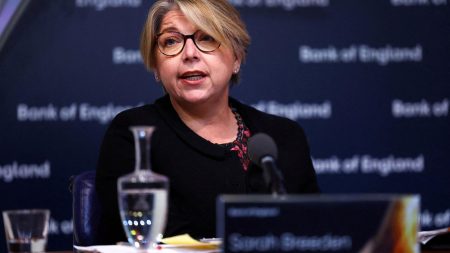In a recent speech, Cleveland Federal Reserve President Loretta Mester indicated that she still expects interest rate cuts to occur this year, but not at the upcoming policy meeting in May. She suggested that the long-term trajectory for interest rates is higher than what policymakers had previously anticipated. San Francisco Fed President Mary Daly also expressed similar expectations for rate cuts, but emphasized that more convincing evidence of subdued inflation is needed before any action is taken. Both officials acknowledged the progress made in inflation and economic growth but remained cautious about the timing and extent of rate cuts.
Mester highlighted the need for additional data to gauge the direction of inflation, as well as determine whether recent data discrepancies are temporary fluctuations or signs of a stalled progress in inflation. She emphasized the importance of waiting for further evidence before making any decisions on interest rates. The Federal Open Market Committee (FOMC) recently decided to maintain the key overnight borrowing rate in a range between 5.25% and 5.5%, citing the need for more evidence of inflation progress before considering rate cuts.
Despite the anticipation of rate cuts this year, Mester’s comments suggest that a reduction in rates at the upcoming FOMC meeting in April-May is unlikely. Market pricing aligns with this sentiment, as investors expect easing measures to begin in June, with a potential cut of three-quarters of a percentage point by the end of the year. San Francisco Fed President Daly also expressed support for multiple rate cuts this year, emphasizing that projections are not guarantees and that the timing of rate cuts will depend on economic conditions.
In terms of the long-term outlook for interest rates, Mester believes that the federal funds rate will be higher than the previously expected level of 2.5%. She identified the neutral rate, also known as the “r*” rate, at 3%, indicating a level where policy is neither restrictive nor stimulative. This adjustment in the long-term rate projection reflects a shift towards a higher rate than what was initially anticipated. Mester emphasized the importance of calibrating policy to align with economic developments in order to avoid the need for aggressive actions to stimulate the economy.
Overall, Mester and Daly’s comments underscore the cautious approach taken by the Federal Reserve in relation to interest rate decisions. Both officials emphasized the need for more evidence of inflation progress before committing to rate cuts. The projected timeline for rate cuts suggests a gradual easing of monetary policy this year, with a focus on economic conditions and inflation data as key indicators for future decisions. The adjustments in the long-term rate projections highlight the Fed’s efforts to navigate economic uncertainties and maintain stability in the financial market.















